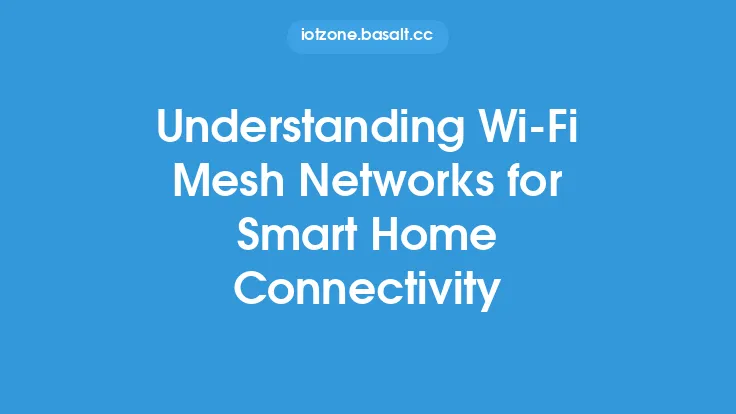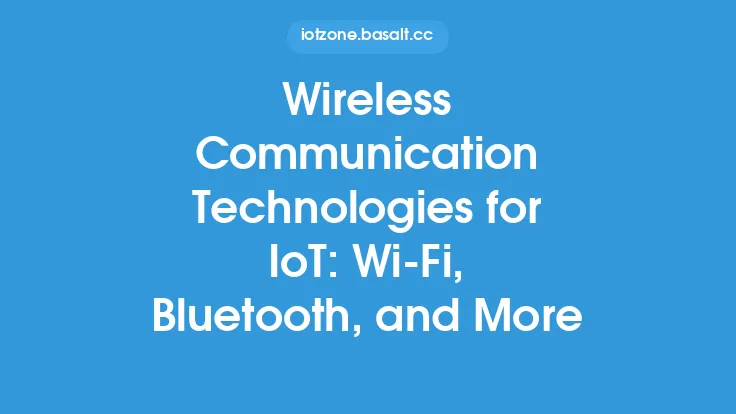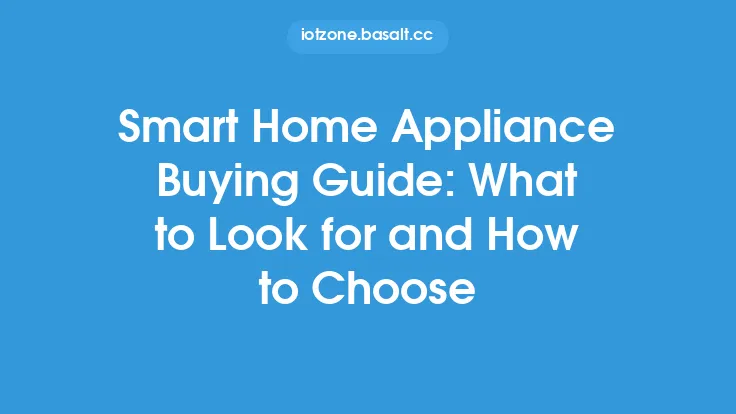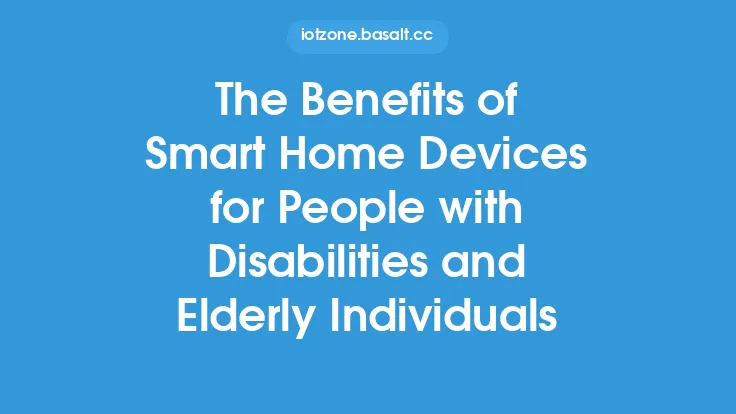When it comes to connecting smart home devices, there are several options available, each with its own strengths and weaknesses. The three most common connectivity protocols used in smart home devices are Wi-Fi, Bluetooth, and Zigbee. In this article, we will delve into the details of each protocol, exploring their characteristics, advantages, and disadvantages, to help you decide which one is best suited for your smart home needs.
Introduction to Wi-Fi
Wi-Fi is one of the most widely used connectivity protocols in smart home devices. It operates on the 2.4 GHz and 5 GHz frequency bands, allowing devices to connect to the internet and communicate with each other. Wi-Fi is a popular choice for smart home devices because it offers high data transfer rates, making it ideal for devices that require high-bandwidth connections, such as smart TVs and streaming devices. Additionally, Wi-Fi is widely supported by most devices, making it easy to integrate new devices into your smart home network. However, Wi-Fi has some limitations, including interference from other devices, range limitations, and power consumption.
Introduction to Bluetooth
Bluetooth is another popular connectivity protocol used in smart home devices. It operates on the 2.4 GHz frequency band and is designed for low-power, low-data-rate applications. Bluetooth is commonly used in devices such as smart speakers, headphones, and smart home sensors. It offers several advantages, including low power consumption, ease of use, and low cost. However, Bluetooth has some limitations, including limited range, interference from other devices, and security concerns. There are two main types of Bluetooth: Bluetooth Classic and Bluetooth Low Energy (BLE). Bluetooth Classic is used for high-data-rate applications, while BLE is used for low-power, low-data-rate applications.
Introduction to Zigbee
Zigbee is a low-power, low-data-rate connectivity protocol used in smart home devices. It operates on the 2.4 GHz frequency band and is designed for devices that require low power consumption and low data transfer rates. Zigbee is commonly used in devices such as smart lighting, thermostats, and security systems. It offers several advantages, including low power consumption, low cost, and high reliability. Additionally, Zigbee devices can form a mesh network, allowing them to communicate with each other and extend the range of the network. However, Zigbee has some limitations, including limited range, interference from other devices, and compatibility issues with other protocols.
Comparison of Wi-Fi, Bluetooth, and Zigbee
When choosing a connectivity protocol for your smart home devices, it's essential to consider the specific needs of each device. Wi-Fi is ideal for devices that require high-bandwidth connections, while Bluetooth is suitable for devices that require low-power, low-data-rate connections. Zigbee is a good choice for devices that require low power consumption and low data transfer rates. The following table summarizes the key characteristics of each protocol:
| Protocol | Frequency Band | Data Transfer Rate | Power Consumption | Range | Cost |
|---|---|---|---|---|---|
| --- | --- | --- | --- | --- | --- |
| Wi-Fi | 2.4 GHz, 5 GHz | Up to 1 Gbps | High | Up to 150 feet | Medium to High |
| Bluetooth | 2.4 GHz | Up to 2 Mbps | Low | Up to 30 feet | Low to Medium |
| Zigbee | 2.4 GHz | Up to 40 kbps | Low | Up to 100 feet | Low |
Security Considerations
When choosing a connectivity protocol for your smart home devices, it's essential to consider security. All three protocols have some level of security built-in, but they can be vulnerable to hacking and other security threats. Wi-Fi is generally considered to be the most secure protocol, as it uses advanced encryption methods such as WPA2 and WPA3. Bluetooth and Zigbee also use encryption, but they can be more vulnerable to hacking due to their low-power and low-data-rate nature. To ensure the security of your smart home devices, it's essential to use strong passwords, keep your devices and protocols up to date, and use a secure router.
Conclusion
In conclusion, the choice of connectivity protocol for your smart home devices depends on the specific needs of each device. Wi-Fi is ideal for devices that require high-bandwidth connections, while Bluetooth is suitable for devices that require low-power, low-data-rate connections. Zigbee is a good choice for devices that require low power consumption and low data transfer rates. By understanding the characteristics, advantages, and disadvantages of each protocol, you can make an informed decision and create a seamless and secure smart home network. Additionally, it's essential to consider security and use best practices to protect your devices and data from hacking and other security threats.





